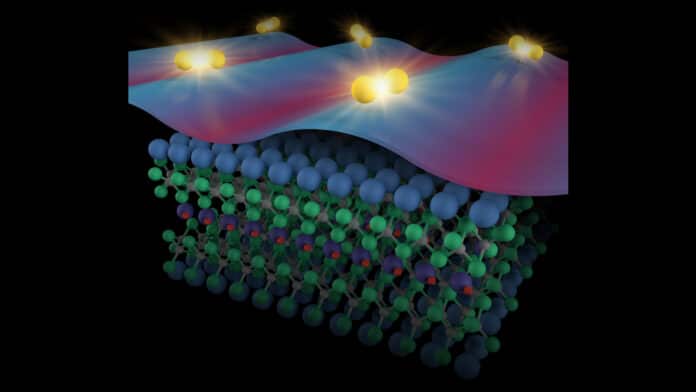The “holy grail” of discovery in the science of superconductivity is superconductivity when electrons can pass through a substance with no resistance. However, even the so-called “high-temperature” superconductors need to be maintained extremely cold to work, which is too cold for the majority of uses.
Superconductors are extremely complicated materials with intertwined and occasionally competing magnetic and electronic states, so there is still much for scientists to understand before room-temperature superconductivity can be realized. One such state is a different superconducting state of matter called a pair density wave (PDW), characterized by coupled pairs of moving electrons.
It has been assumed that PDWs only happen when a superconductor is exposed to a strong magnetic field. However, new work by the National Institute of Advanced Industrial Science and Technology of Japan, Columbia University, and the Brookhaven National Laboratory of the U.S. Department of Energy has directly seen a PDW in an iron-based superconducting material without a magnetic field.
Kazuhiro Fujita, a physicist at Brookhaven who participated in the study, said, “Researchers in our field have theorized that a PDW could exist independently, but the evidence has been ambiguous. This iron-based superconductor is the first material in which the evidence points to a zero-magnetic-field PDW. This is an exciting result that opens new potential avenues of research and discovery for superconductivity.”
The iron pnictide EuRbFe4As4 (Eu-1144) is remarkable because it naturally possesses ferromagnetism and superconductivity. The group was initially drawn to the material and inspired to investigate it because of this remarkable dual personality.
When the magnetism first appeared, the spatially modulated superconductivity was found. In Brookhaven’s ultra-low vibration lab, scientists used a cutting-edge spectroscopic-imaging scanning tunneling microscope (SI-STM) to study Eu-1144.
Physicist Abhay Pasupathy, one of the paper’s co-authors affiliated with Brookhaven and Columbia, said, “We wanted to see, is this magnetism linked to the superconductivity? In general, superconductors are destabilized by magnetic order, so when superconductivity and magnetism exist together in a single compound, it is interesting to see how they coexist. It’s conceivable that the two phenomena exist in different parts of the compound and have nothing to do with each other. But, instead, we found that there is a beautiful connection between the two.”
The researcher said, “This microscope measures how many electrons at a specific location in the material ‘tunnel’ back and forth between the sample’s surface and the tip of the SI-STM as the voltage between the tip and the surface is varied; these measurements allow us to create a map of both the sample’s crystal lattice and the number of electrons at different energies at each atomic location.”
The tests indicated a gap in the spectrum of electron energies below the sample’s crucial superconducting temperature. This is a significant marker since its size is proportional to the energy required to split the electron pairs transporting the superconducting current.
The electrons’ binding energies vary and oscillate between a minimum and a maximum, as shown by variations in the gap. These changes in the energy gap are a PDW’s clear signature.
The replication of this phenomenon in different materials is one new area that this discovery is pointing researchers in. More PDW-related issues might be researched, such as attempting to infer the mobility of the electron pairs from signatures that appear in other features of the material.
Many of the research group’s associates have expressed an active interest in their study. They are already planning various experiments using x-rays and muons on this substance.
Journal Reference:
- Zhao, H., Blackwell, R., Thinel, M., et al. Smectic pair-density-wave order in EuRbFe4As4. Nature. DOI: 10.1038/s41586-023-06103-7
